Border Patrol's Tucson Sector sees 15-year high as advocates adapt to Lukeville migration shift
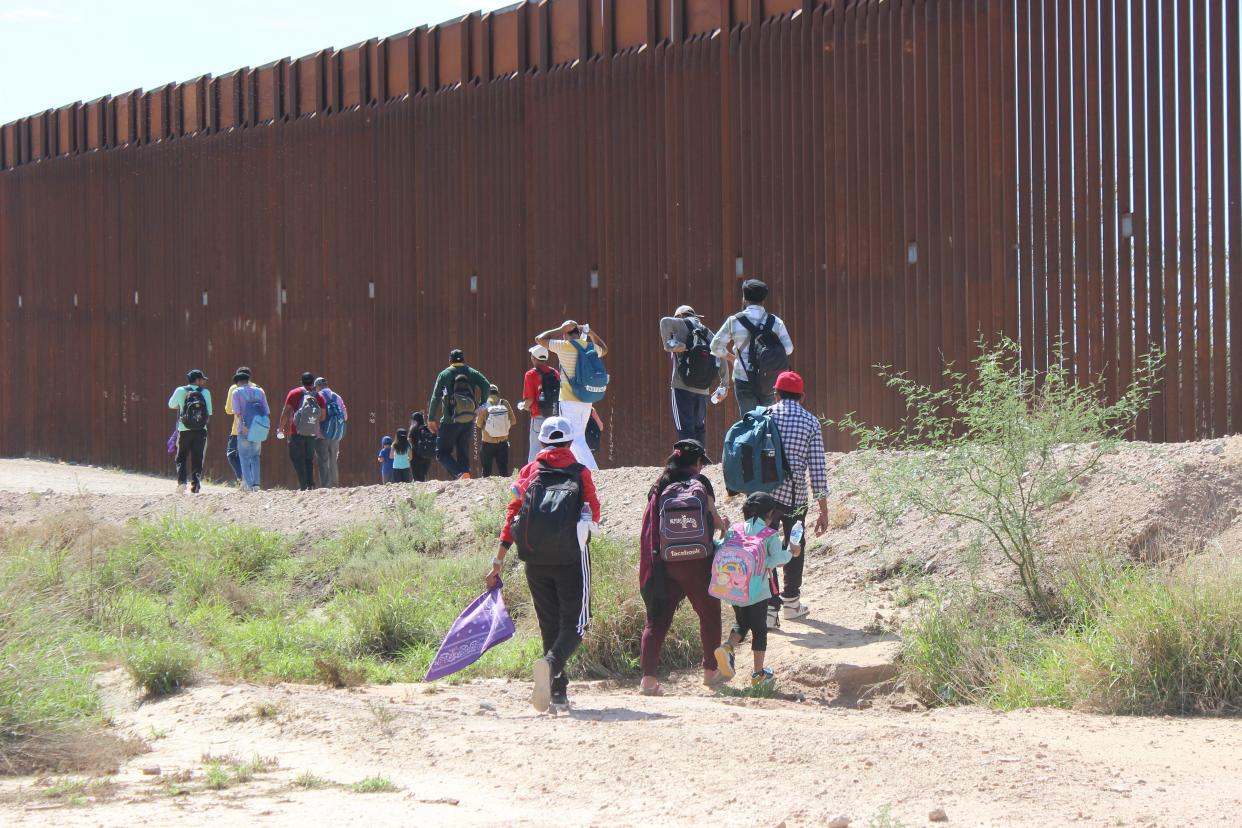
ORGAN PIPE CACTUS NATIONAL MONUMENT — Tom Wingo threw his hands in the air.
He clutched three frosty water bottles above his head as he waved his arms toward a group of migrants on a recent morning. The group of roughly 30 people stretched down a desolate dirt road running alongside the border wall in Organ Pipe Cactus National Monument west of Lukeville.
Wingo, 76, donned a ruby red long-sleeve shirt and a pearl white goatee, which was shaded by his wide-brim hat and sunglasses. He could be easily spotted, even among the remote swath of desert dotted with saguaros along the Arizona-Mexico border.
“You guys want a water?” Wingo, a volunteer with Humane Borders and Samaritanos Sin Fronteras, bellowed at the group as he stood behind a Humane Borders pickup truck equipped with a massive water tank.
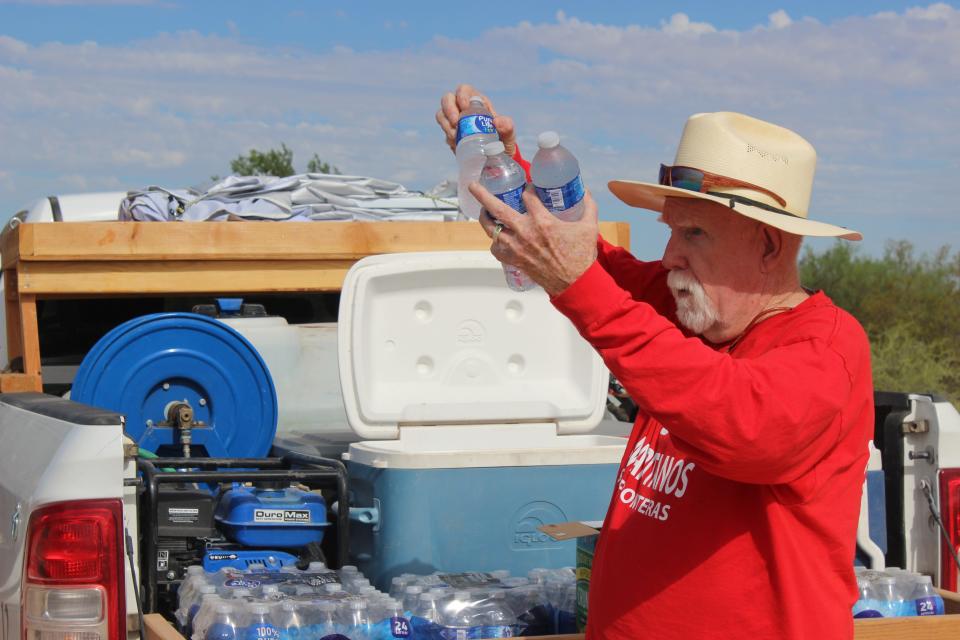
Wingo replenishes 55-gallon water drums and provides snacks and heat relief to migrants he encounters along 6 miles of the border wall near Lukeville. Wingo almost always comes in contact with migrants during his trips to the border, which he makes most days.
He’s been making the trip for the past two months. He goes three days out of the week, sometimes more.
Men, women and children, mostly from India, drifted off the dirt road and filed through the back of the truck, snagging cold waters from coolers before walking back onto the road. Many were already profusely sweating as they carried hoodies and spare shirts from the straps of their backpacks.
The final members of the group passed behind the truck bed and continued their walk east. The stretch of desert began to simmer under the unrelenting sun as the morning hours slipped into the afternoon.
“Our bottom line is helping migrants,” Wingo said. “We don't want any deaths on our watch.”
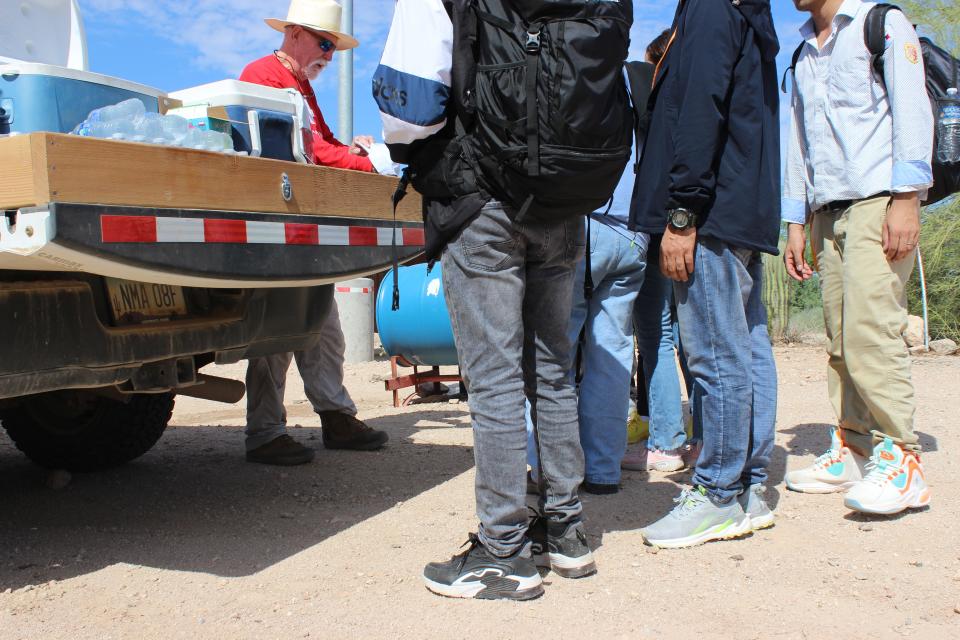
There were three other volunteers who joined Wingo later. About 56 migrants in total received assistance.
In July, the Border Patrol’s Tucson Sector, which covers 262 miles of the border from New Mexico to Yuma County, became the busiest sector for migrant encounters along the southwest border. The sector set a 15-year monthly high in July, surpassing its record set in April 2008.
Biden's border rule: Asylum rule endangers thousands along US-Mexico border, report says
The Border Patrol’s Tucson Sector logged 39,215 migrant encounters in July, surpassing Texas’ sectors to become the busiest on the border.
Border Patrol encounters with families with children nearly doubled in the Tucson Sector in July, according to CBP data. Similarly, the number of Ecuadorians encountered nearly tripled in the sector in July.
Families with children are less likely to have President Joe Biden’s asylum transit ban applied to them, which could explain the jump in encounters, according to Adam Isacson, director for defense oversight at the Washington Office on Latin America.
“The word I think is out that if you show up as a family, you're probably going to get processed into the country,” Isacson said.
The record number of encounters came during a time of record-breaking heat in Arizona with the state experiencing its hottest July on record.
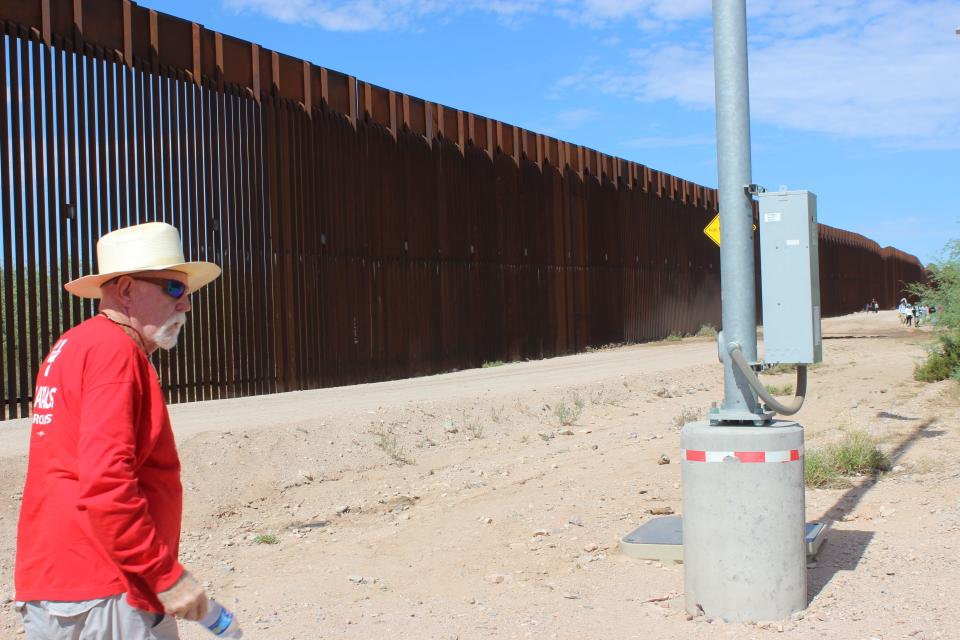
July also logged the most migrant human remains recovered in Arizona so far this year, according to the Arizona OpenGIS Initiative, a collaboration between the Pima County Office of the Medical Examiner and the nonprofit Humane Borders.
'Recipe for death': Record temps, policies contribute to recent string of migrant deaths
They determined 42 remains were found in July and at least 109 remains have been recovered thus far this year.
Wingo recently came across two moms and five kids from Ecuador who were sitting under a tree while it was 115 degrees. Two of the kids were still nursing.
“One of the moms was just as red as anything I've ever seen in my life,” Wingo said.
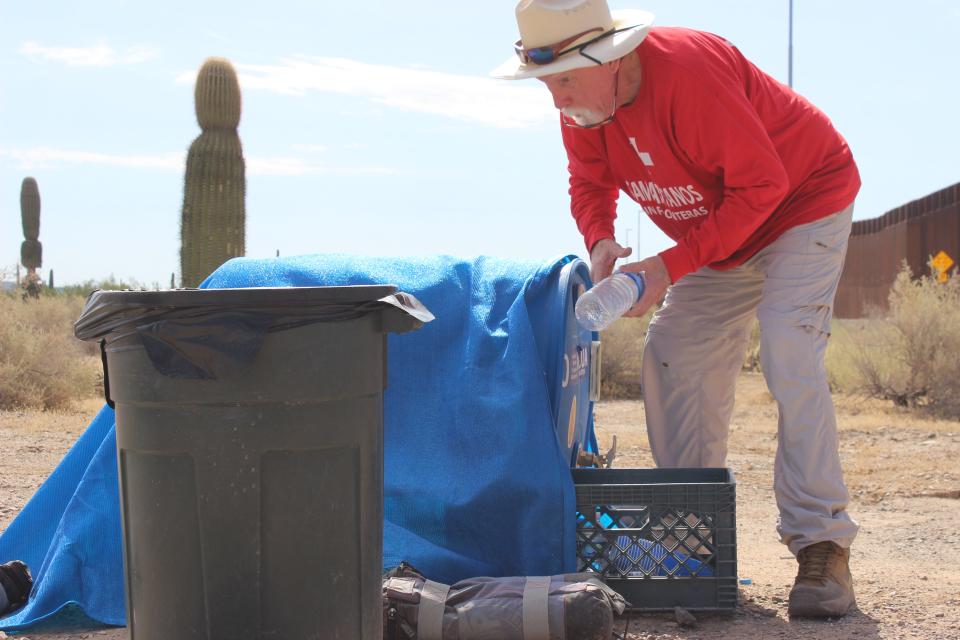
Wingo was able to contact Border Patrol agents to help provide medical aid to the two families.
“I have 10 more stories like that,” Wingo said in regard to other experiences he’s had with migrants experiencing heat distress.
The area where Wingo works has recently become a corridor for human smuggling organizations to move primarily non-traditional single adult migrants through, according to U.S. Customs and Border Protection.
Non-traditional migrants are people who the Border Patrol doesn’t typically encounter, including people from regions other than Mexico and Central America. Border Patrol has recently encountered migrants from Ecuador, Senegal, India and Mauritania in northwest Africa, per CBP.
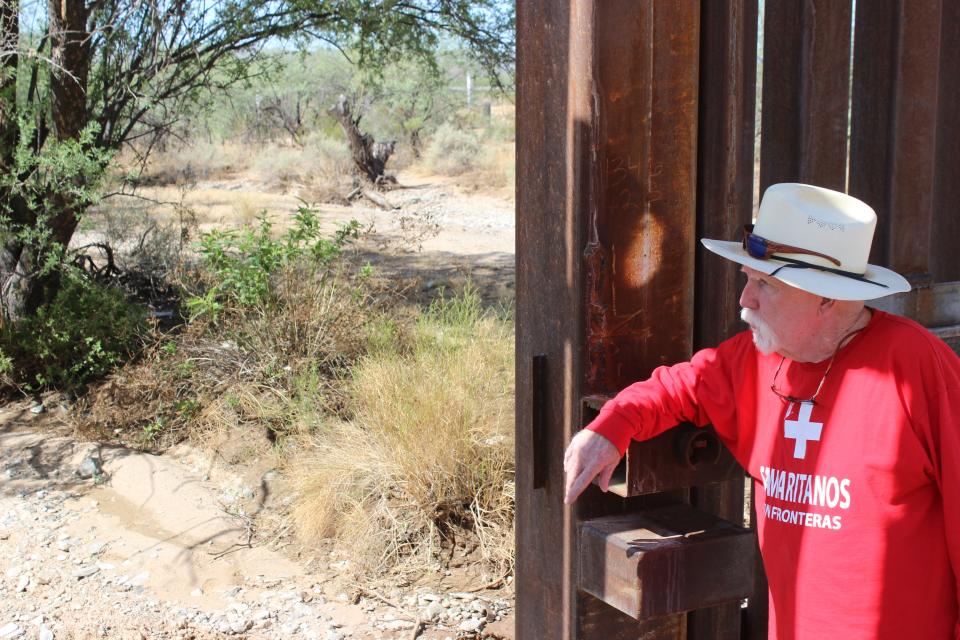
Wingo often encounters groups of people along the border wall seemingly out of nowhere. Migrants may be entering through six flood gates that were open along the 6-mile stretch of border wall where Wingo works.
The gates are left open during the monsoon season because heavy rains and flooding can topple the wall if not.
“I can go down the road, check the water tanks and nobody's there and I can come back and there'll be 100 people standing there,” Wingo said.
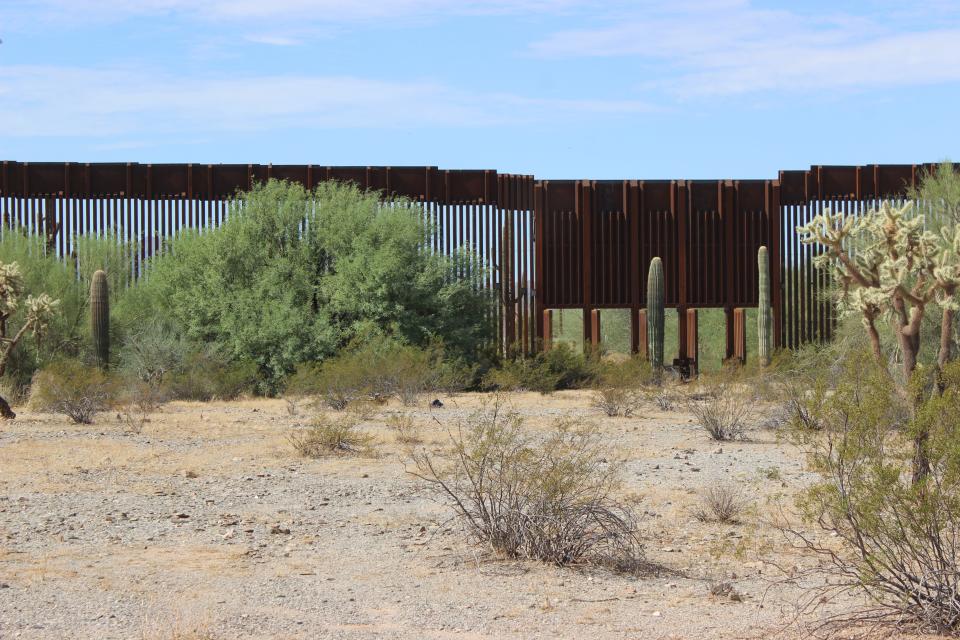
Most migrants will wait to be picked up and processed by agents. Some will start walking east toward the outdoor processing tent that Border Patrol has set up near the highway.
Border Patrol has reported large groups of migrants in the area near Lukeville. A 533-person group of migrants from 17 different countries was encountered west of Lukeville in early August. In months past, the Yuma Sector was previously a busy corridor for migration with large groups of migrants presenting themselves to agents near Somerton.
“You're just going to keep having this cat-and-mouse-game where everybody looks at what sectors, what demographics and what nationalities are most likely to be processed into the United States,” Isacson said.
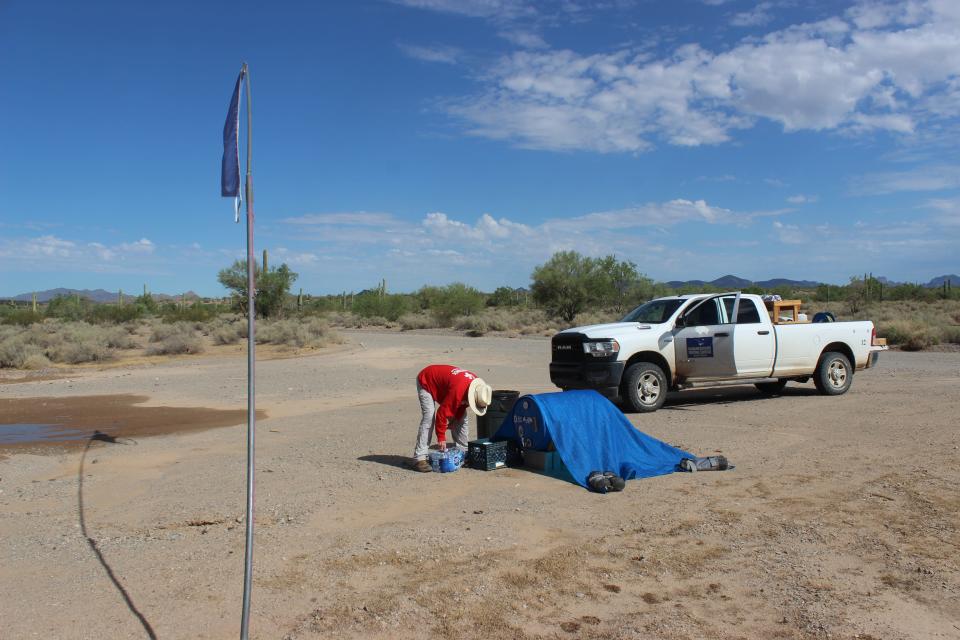
Smugglers are currently moving migrants through the Cabeza Prieta National Wildlife Refuge and the Organ Pipe Cactus National Monument near Ajo, according to CBP. The remote swath of the southwest border is notorious for its deadly temperatures and unforgiving terrain.
Border Patrol has surged personnel and transportation resources to respond to the encounters in the area, per CBP. Given the smaller size of the Ajo Border Patrol Station, migrants are only medically screened and initially processed there before being taken to other locations.
CBP conducts a background check and collects biometric and biographic information before transferring migrants to locations with more extensive facilities. Time in custody from the field to the station to transfer to another station remains below 15 hours, according to CBP.
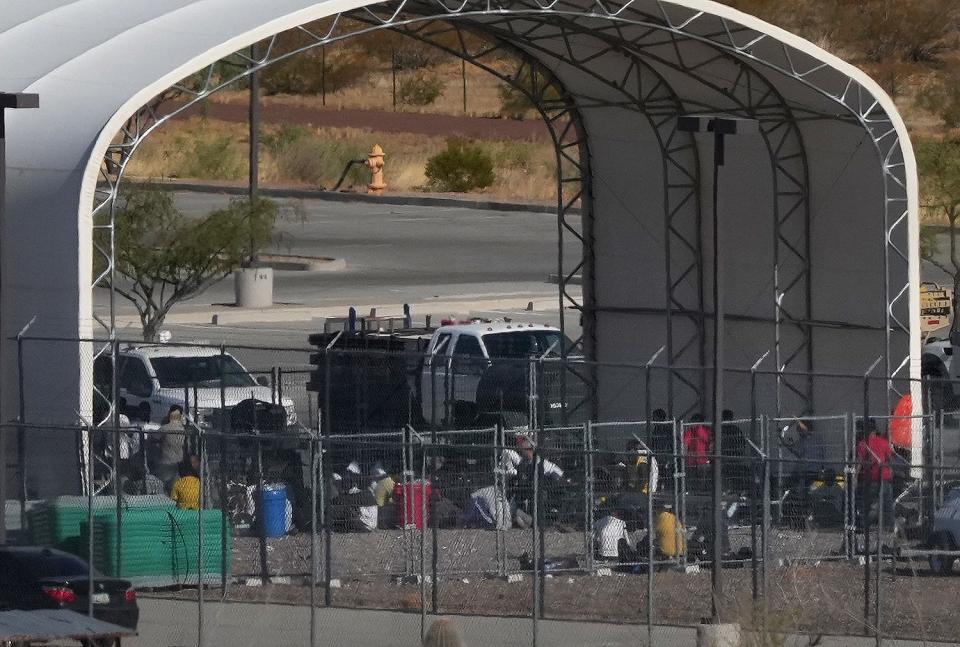
In July, Ajo Border Patrol agents were discovered to be holding migrants in outdoor cages during record-high temperatures that reached up to 117 degrees. A few dozen migrants were held outside of the Ajo station in Why, underneath a large white canopy.
Outdoor cages: Border Patrol's caging of migrants in record heat decried by advocates
Single adult male migrants may be rotated to the outside facility on an as-needed basis before they’re transferred to other locations for further processing, according to CBP. The station prioritizes the detention of unaccompanied children and family units inside the facility.
Migrants in the outdoor cages are continuously monitored by agents on site and are medically screened before being placed outside, per CBP. If a migrant asks to be seen again, or shows signs of diminished health, agents will immediately bring the person into the station to be screened again and given medical care, according to CBP.
Have a news tip or story idea about the border and its communities? Contact the reporter at josecastaneda@arizonarepublic.com or connect with him on X, formerly known as Twitter, @joseicastaneda.
This article originally appeared on Arizona Republic: Border Patrol's Tucson Sector is the busiest on the border. Why?

